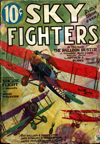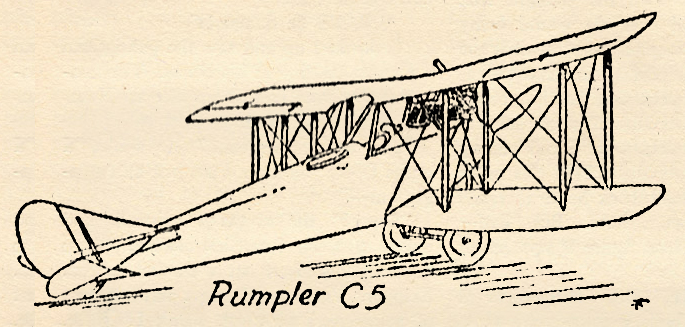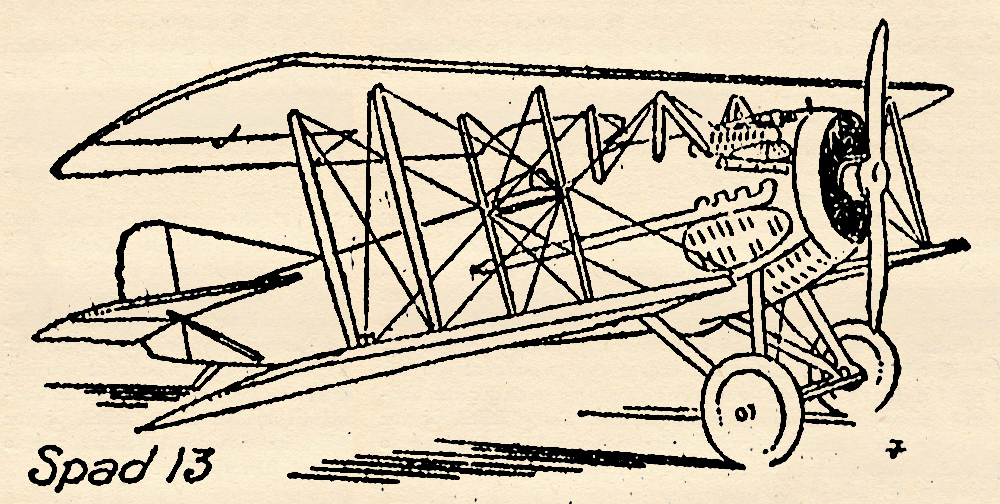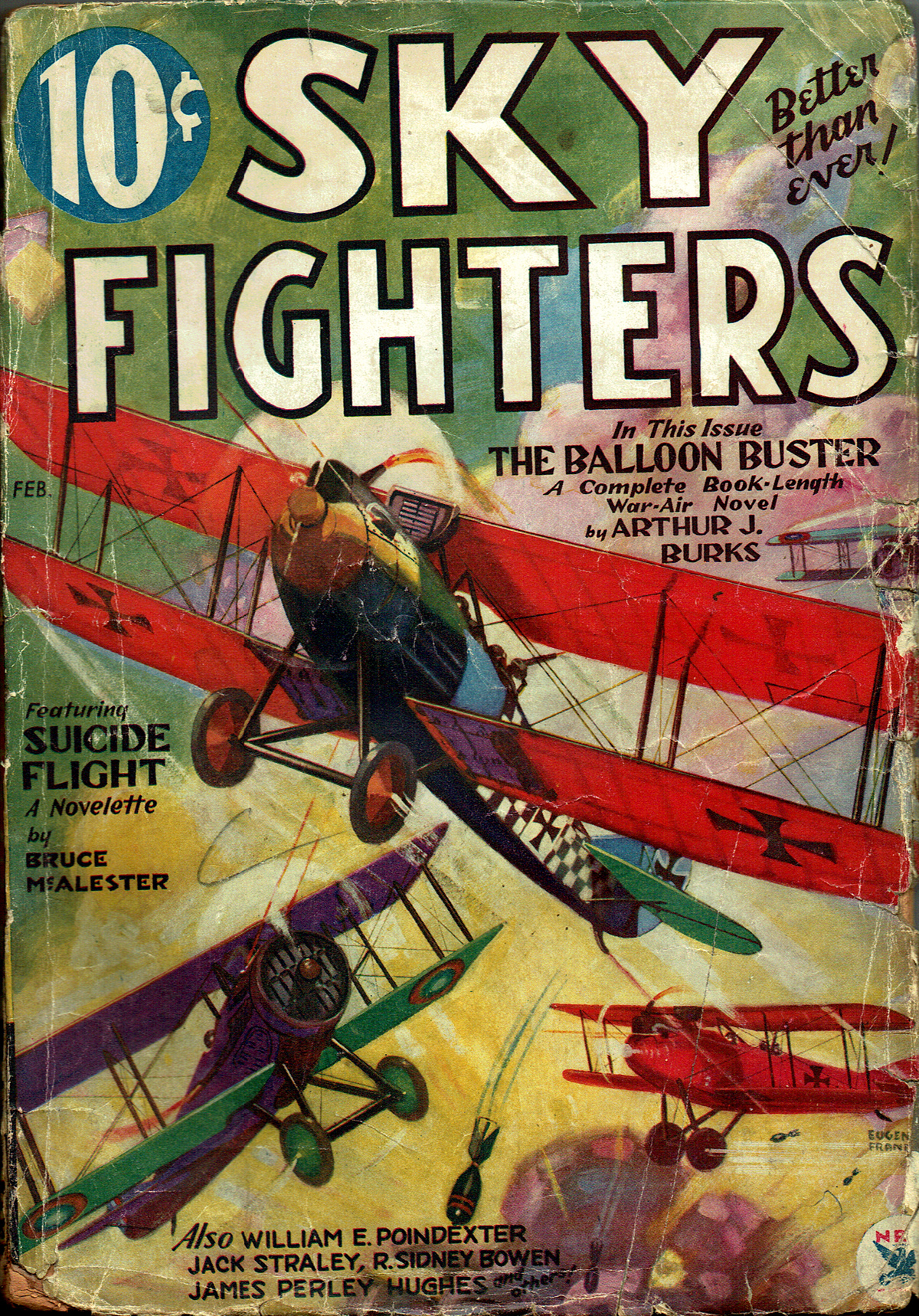“Sky Fighters, February 1934″ by Eugene M. Frandzen
This week we have the cover of Sky Fighters from February 1934 by our old friend Eugene Frandzen. Franzen painted the covers of Sky Fighters from its first issue in 1932 until he moved on from the pulps in 1939. At this point in the run, the covers were about the planes featured on the cover more than the story depicted.
THE SHIPS pictured  on this month’s cover are the German Rumpler type C5 and the French Spad type 13.
on this month’s cover are the German Rumpler type C5 and the French Spad type 13.
The Rumpler was one of Germany’s most successful war planes. As far back as 1908 Herr E. Rumpler was working on airplane designs. At first his ships followed closely the Eitrich “Taube” design, that queer birdlike swept-back wing construction. In a Rumpler biplane an eighteen-hour record was established just before the war by Herr Basser who flew from Berlin to Constantinople, making only three stops.
This flight was phenomenal for those days and it was only natural that when the World War flared and burst over nearly all Europe that the German High Command would do plenty of concentrating on their prize-winning Rumpler. It eventually lost its swept-back wings but the general appearance of the fuselage and nose remained the same up to the end of the war.
The two Rumpler C5s pictured on the cover are equipped for light bombing. Their speed was around 105 to 110 m.p.h.

From the blast of the explosion coming from the bottom of the picture it looks as though they have caused plenty of trouble. When we consider that the bill for the World War amounted to about 186 billion dollars and that plenty of that sweet little amount went into explosives of assorted shapes and potency one little ammunition dump valued at a few hundred thousand dollars doesn’t amount to much on the books, but add a few of these dumps together along a front that is causing the opposing power plenty of headaches and you’ll easily see how extremely important a little bomb-dropping party really is.
That in exactly what is happening in the picture—an ammo dump has gone blooey. One bomb beautifully spotted by the leading Rumpler pilot has done the trick. His pardner in the background is shedding his load of eggs in a businesslike manner too. The odds are against the Allies in this particular instance. They will have to rush some fresh ammunition to this particular sector if they want to have sufficient food for their hungry cannons.
But don’t overlook that Spad coming in with both guns blazing at the Rumpler. It didn’t get there quite in time to drive the Fritz away before he could shed his bombs but if a stray hunk of exploding shell from the dump doesn’t get one of the Spad pilots it will just be too bad for the men in the German ships.

This Spad 13 could kick off about 130 to 135 miles per hour. It carried plenty of horsepower up front in its nose, 220 to be exact. The ambitious pilots of the bomb-dropping Rumplers are quite some distance behind the Allied lines. Their protection planes are far behind the German lines. And those two Spads will either herd the Germans down to the ground or blow them out of the sky.
Bombing ammunition dumps during the World War was done extensively by both sides. Many times the pilot and observer of a two-seater plane went on a special ammunition-bombing expedition from which they knew they would never return.
They had specific jobs to accomplish and they grinned, smoked a last cigarette and flew their ships to the spot indicated on their maps. Usually a one-way trip, but if the mission was successful thousands of lives were saved.

Sky Fighters, February 1934 by Eugene M. Frandzen
(The Ships on The Cover Page)
Next time, Mr. Frandzen features the Morane-Saulnier Parasol (type P)!




